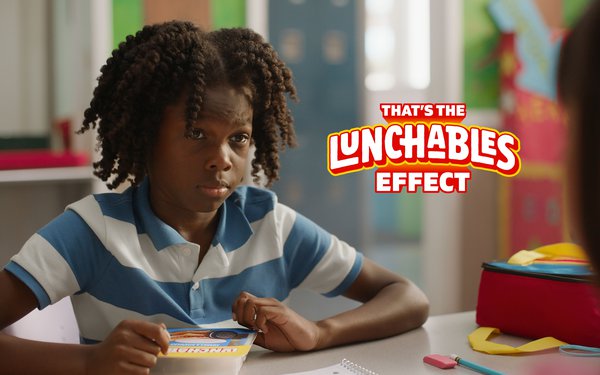
Even with grocery prices still elevated, most
parents say they’d rather pack lunch than rely on the cafeteria. That’s one takeaway from Deloitte’s new back-to-school study, which finds 42% of caregivers send their kids with a
home-packed lunch, despite school-provided meals often being cheaper — and sometimes free.
The research pegs the average cost of a packed lunch at $6.15
per day, about 3% higher than last year. Freshness, nutrition, and variety are the big draws: 63% of parents say they get better value from packing, and 52% cite more variety. More than eight in 10
say they’d like their kids to eat healthier during the school day.
But CPG brands know they’re facing an increasingly tough audience.
In recent results, Kraft Heinz said Lunchables sales have been declining. Now, it’s hoping to rekindle demand with “The Lunchables Effect,” the brand’s first major 360 creative
campaign since 2020.
advertisement
advertisement
Created by Mischief USA, the spots dramatize what Kraft calls the
“cool effect” of walking into a cafeteria with a Lunchables — a feeling many millennial parents remember from their own school days. Scenarios range from high-stakes lunchbox
negotiations to slow-motion, envy-filled glances from across the room. The work runs across TV, online video, social, and digital, timed to hit during the back-to-school season.
“For more than 40 years, Lunchables has been a leading lunchtime favorite,” says Alyssa Cicero, senior brand manager, in the release. “We wanted to
shed light on the real and relatable experiences kids have, and creatively show the ‘cool effect’ that reinforces the brand as a classic, bold choice.”
The campaign marks Lunchables’ move away from its “Built To Be Eaten” platform, launched in 2020. The company hopes the nostalgia play will appeal
to both kids and parents and help the brand regain share amid intensifying competition from private labels and rival brands.
At rival JM Smucker,
the picture is brighter: While overall revenues declined last quarter, sales of Uncrustables — its frozen, premade peanut butter-and-jelly sandwiches — were a rare growth
highlight.
Deloitte’s findings suggest there’s still room for both brands to compete — and that winning the lunchbox comes down to more than just price. While many
parents are watching costs closely, they also prioritize convenience and variety, with 63% of lunch-packers saying they get better value from homemade lunches, and 52% citing more
variety.
Nearly a third say they would switch to private labels if prices climb higher, while 27% would substitute a cheaper main item, and 24%
would cut other household expenses to make room for lunch costs. Even so, many are willing to spend more for perceived quality: three in four want school lunches to include more fresh food, and 57%
want more locally sourced options, even at a higher price.
Against that backdrop, brands like Lunchables are leaning on nostalgia and what they
call the “cool effect” to stand out — hoping that, even as parents weigh budgets and nutrition, their products can still hold prime real estate in kids’ lunchboxes.